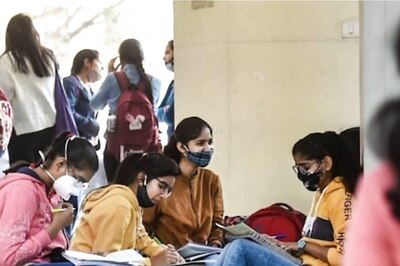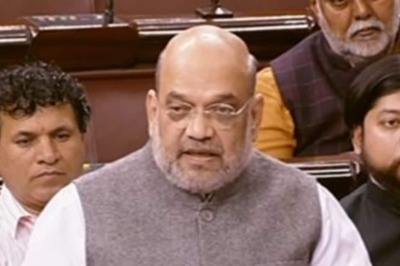
views
India on Friday conveyed to the US that it was eyeing to resolve the military standoff with China in eastern Ladakh through existing bilateral mechanisms, sending a clear message to Washington for the second consecutive day that President Donald Trump's offer to mediate on the border row was not acceptable to it.
India's position on the issue was conveyed to US Defense Secretary Mark T Esper by Defence Minister Rajnath Singh during a telephonic conversation, official sources said.
In the midst of the flare-ups between Indian and Chinese armies, Trump on Wednesday said he was "ready, willing and able to mediate" between the two countries.
The External Affairs Ministry on Thursday said India was engaged with China to peacefully resolve the border row, virtually rejecting the offer. China too rejected it, saying the two countries are capable of properly resolving their differences through dialogue and did not require the help of a "third party".
The sources said Singh conveyed to Esper that existing bilateral mechanisms are being used to resolve the situation.
In a statement, the defence ministry said the two sides exchanged views on regional developments of shared security interest, adding the telephonic conversation took place following a request by the US side.
"They reviewed progress on various bilateral defence cooperation arrangements and expressed their commitment to further promote our defence partnership," it said.
On Thursday too, Trump reiterated his offer to mediate and said that he spoke to Modi, who is not in a "good mood" over the "big conflict".
Hours later, top government sources contradicted the US President's claim of the conversation between him and Modi on India's ongoing military standoff with China in eastern Ladakh.
Troops of India and China were engaged in a major standoff for over three weeks in Pangong Tso, Galwan Valley, Demchok and Daulat Beg Oldie in eastern Ladakh, in what is turning out to be the biggest confrontation between the two countries after the Doklam episode in 2017.
The trigger for the face-off was China's stiff opposition to India laying a key road in the Finger area around the Pangong Tso Lake besides construction of another road connecting the Darbuk-Shayok-Daulat Beg Oldie road in Galwan Valley.
MEA Spokesperson Anurag Srivastava on Thursday said India was engaged with China at military and diplomatic levels to resolve the ongoing standoff with China, but at the same time asserted that the country is "firm" in its resolve to protect its sovereignty and national security.
The situation in eastern Ladakh deteriorated after around 250 Chinese and Indian soldiers were engaged in a violent face-off on the evening of May 5 which spilled over to the next day before the two sides agreed to "disengage".
However, the standoff continued.
The incident in Pangong Tso was followed by a similar incident in north Sikkim on May 9.
The troops of India and China were engaged in a 73-day stand-off in Doklam tri-junction in 2017 which even triggered fears of a war between the two nuclear-armed neighbours.
The India-China border dispute covers the 3,488-km-long LAC. China claims Arunachal Pradesh as part of southern Tibet while India contests it.
Both sides have been asserting that pending the final resolution of the boundary issue, it is necessary to maintain peace and tranquillity in the border areas.


















Comments
0 comment